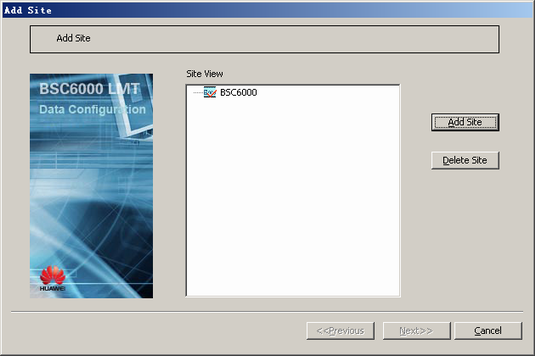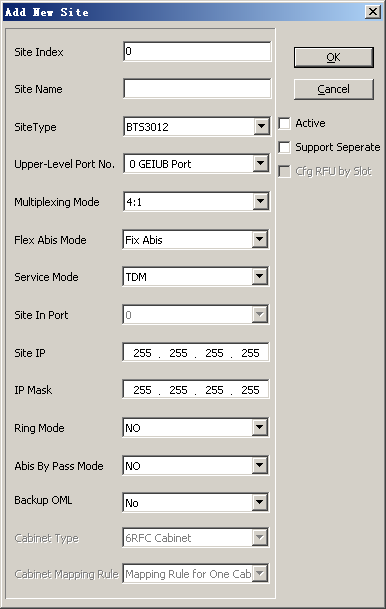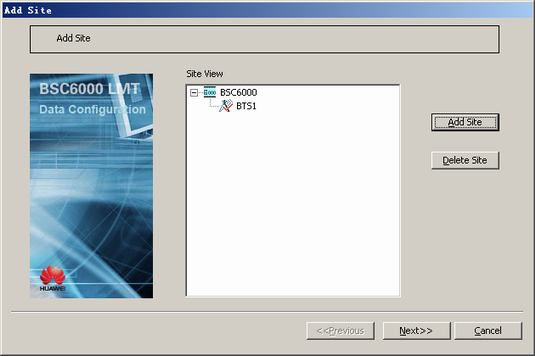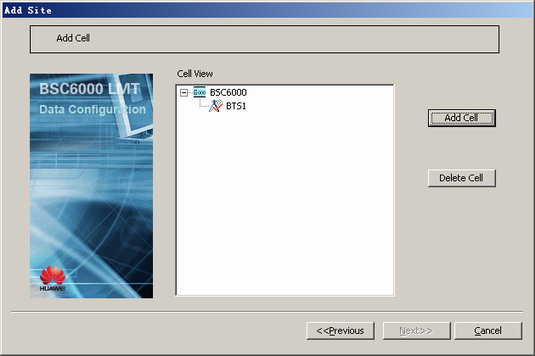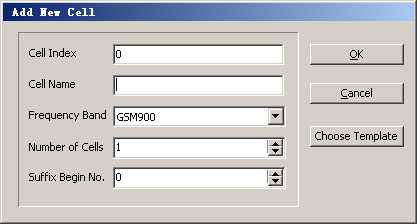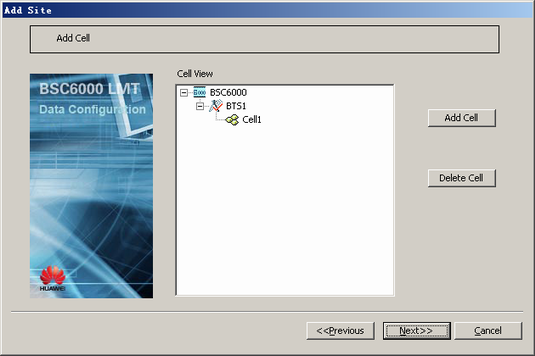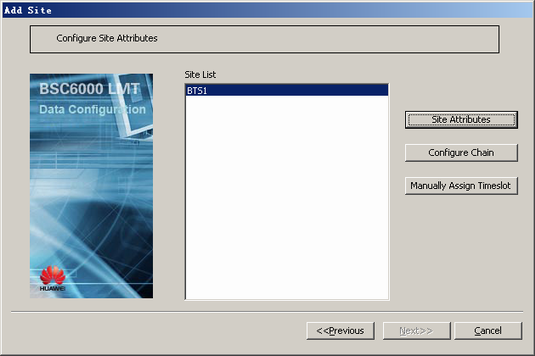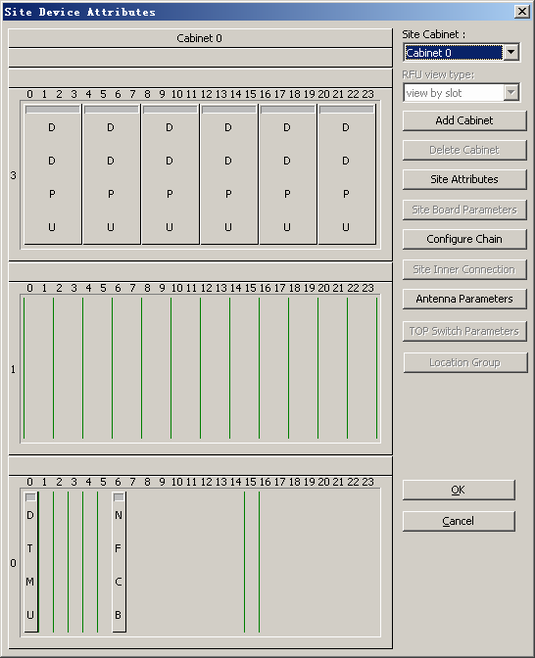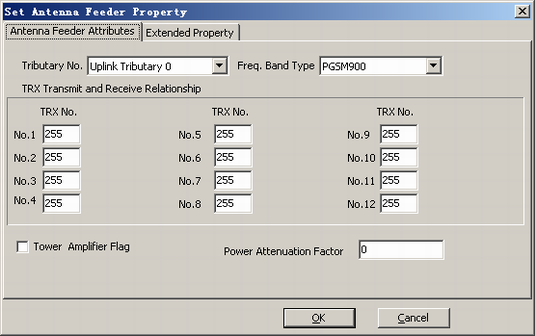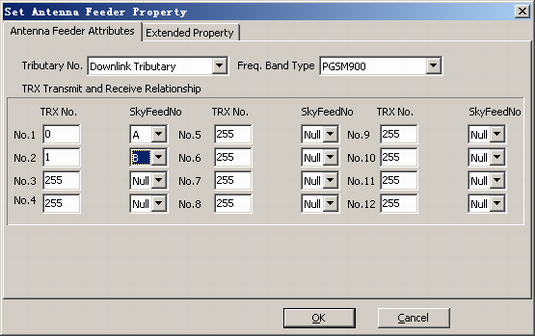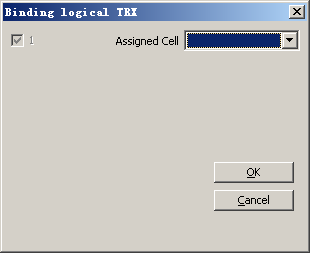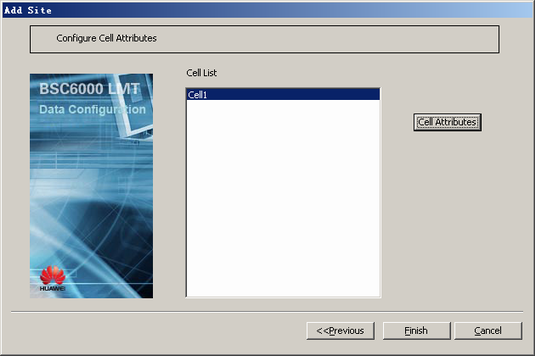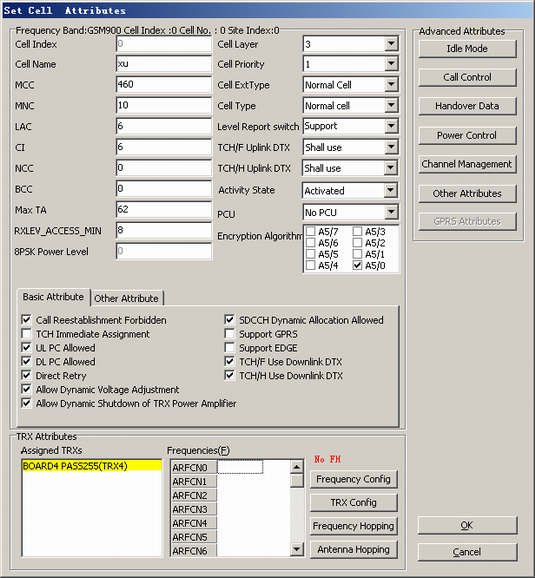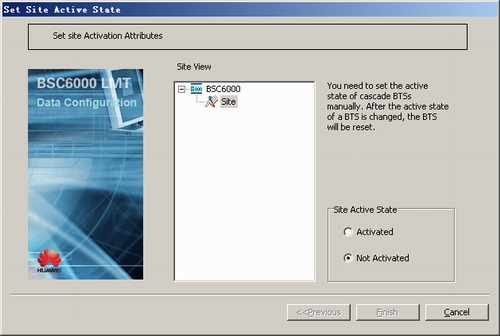This describes how to add a BTS of the BTS 3X family and a BTS of the double-transceiver BTS family in TDM transmission mode for the BSC, and how to configure the site device attributes, cell basic attributes, and TRX attributes.
| Scenario | BSC initial configuration and BSC capacity expansion |
| Mandatory/Optional | Mandatory |
Common BTSs refer to the BTS30, BTS312, BTS3012A, BTS3002C, BTS3006A, BTS3012, BTS3012AE, BTS3006C, BTS3002E, and BTS3012 II. These BTSs support the TDM transmission mode and their configuration procedures are the same.
Prerequisites
- The GEIUB/GOIUB is configured. For details, see Configuring the GEIUB/GOIUB.
- There are idle ports on the GEIUB/GOIUB in the GMPS or GEPS.
- The GXPUM is configured for the GMPS/GEPS where the GEIUB/GOIUB is located. For details, see Configuring the GXPUM.
Preparation
The following procedure takes how to add a BTS3012 on the GEIUB in the GMPS as an example.
Parameter |
Example |
Source |
|
|---|---|---|---|
Site Attributes |
Site Name |
BTS 1 |
Network planning |
Site Type |
BTS3012 |
Network planning |
|
Upper-Level Port No. |
0 GEIUB Port |
Network planning |
|
Multiplexing Mode |
4:1 |
Network planning |
|
Flex Abis Mode |
Fix Abis |
Network planning |
|
Service Mode |
TDM |
Network planning |
|
Active |
Deselected |
Network planning |
|
Config Ring |
No |
Network planning |
|
Config AbisByPass |
No |
Network planning |
|
Backup OML |
No |
Network planning |
|
Cell Attributes |
Cell Name |
Cell 1 |
Network planning |
Frequency Band |
GSM900 |
Network planning |
|
MCC |
460 |
Network planning |
|
MNC |
01 |
Network planning |
|
LAC |
8240 |
Network planning |
|
CI |
1 |
Network planning |
|
BCC |
1 |
Network planning |
|
NCC |
1 |
Network planning |
|
Cell Extension Type |
Common cell |
Network planning |
|
Cell Type |
Common cell |
Network planning |
|
TRX Attributes |
Assigned Cell |
Cell 1 |
Network planning |
Frequency configuration |
988 (main BCCH frequency), 994 |
Network planning |
|
TRX configuration |
TRX 0, TRX 1 |
Network planning |
|
FH Mode |
None |
Network planning |
|
Antenna feeder attributes |
Tributary No. |
Downlink Tributary |
Network planning |
Frequency Band |
PGSM900 |
Network planning |
|
TRX Transmit and Receive Relationship |
TRX No.1: 0, A TRX No.2: 1, B |
Network planning |
|
Procedure
- Start the wizard for adding a BTS.
- When adding a BTS for the first time, you can start the wizard for adding a BTS only on the GEIUB/GOIUB in the GMPS or GEPS. On the BSC6000 Local Maintenance Terminal, right-click a GEIUB in the GMPS.
- If a BTS already exists, you can add a cascaded BTS under this BTS. On the Management Tree tab page, right-click a BTS.
- Choose . A dialog box is displayed, as shown in Figure 1.
- Click Add Site. A dialog box is displayed, as shown in Figure 2.
- Set the parameters by referring to Table 1.
 NOTE:
NOTE: If you set Config Ring to Yes and click OK, the Set Rev Info dialog box is displayed.
Only the BTS30, BTS312, BTS3012A, BTS3002C, BTS3006A, BTS3012, BTS3012AE, BTS3006C, BTS3002E, and BTS3012 II configured on the primary link in the chain topology support the Config AbisByPass function.
The Support Separate option is available only to the BTS3012, BTS3012 II, and BTS3012AE. When Support Separate is selected, the BTS3012, BTS3012 II, and BTS3012AE can be optionally configured with DTRUs or QTRUs. For details about how to configure DTRUs or QTRUs, see Configuring the Multi-Transceiver Units.
If Backup OML is set to Yes, you need to select Configure Chain in Figure 7.
- Click OK. A dialog box is displayed, as shown in Figure 3.
- Click Next. A dialog box is displayed, as shown in Figure 4.
- Select a BTS, and then click Add Cell. A dialog box is displayed, as shown in Figure 5.
- Set the parameters by referring to Table 1.
 NOTE:
NOTE: To add multiple cells at a time, set Number of Cells. The added cells are named in the format of current Cell Name + sequence number.
- Click OK. A dialog box is displayed, as shown in Figure 6.
- Click Next. A dialog box is displayed, as shown in Figure 7.
- Click Site Attributes. A dialog box is displayed, as shown in Figure 8.
- Double-click DDPU. A dialog box is displayed, as shown in Figure 9.
 NOTE:
NOTE: - This takes the configuration of one antenna feeder port on the DDPU as an example. If the antenna feeder port is not required, you can delete the DDPU.
- You need to specify at least one TRX for the downlink tributary of the DDPU. For other tributaries, you can use the default settings.
- The DDPU has two paths: A and B. The two paths are independent of each other. The data configurations of the DDPU must be consistent with the physical connections, and the frequency band of the TRX must be the same as that of the DDPU.
- Set the parameters by referring to Table 1, as shown in Figure 10.
- Right-click an idle slot holding the DTRU subrack in Figure 8 and then choose from the shortcut menu. A TRU is added.
- Right-click the added TRU and choose from the shortcut menu. A dialog box is displayed, as shown in Figure 11.
- Set Assigned Cell by referring to Table 1.
- Click OK to return to the dialog box, as shown in Figure 8.
- Repeat 14 through 17 to configure more TRUs.
- Click OK to return to the dialog box, as shown in Figure 7.
- Click Next. A dialog box is displayed, as shown in Figure 12.
- Click Cell Attributes. A dialog box is displayed, as shown in Figure 13.
- Set the basic attributes of the cell by referring to Table 1.
 NOTE:
NOTE: - For two cells, the values of at least one of the following parameters should be different: MCC, MNC, LAC, and CI.
- If you select GPRS Support, the BSC must be configured with the built-in PCU. If the BTS does not support the GPRS function or the GPRS services are unavailable in the cell, do not select GPRS Support.
- When you select EDGE Support, GPRS Support is selected automatically if the GPRS function is not enabled. You also need to select a PCU from the PCU drop-down list.
- Click OK to return to the dialog box, as shown in Figure 12.
- Click Finish. The configuration of the BTS3012 is complete.
- Activating a BTS.
